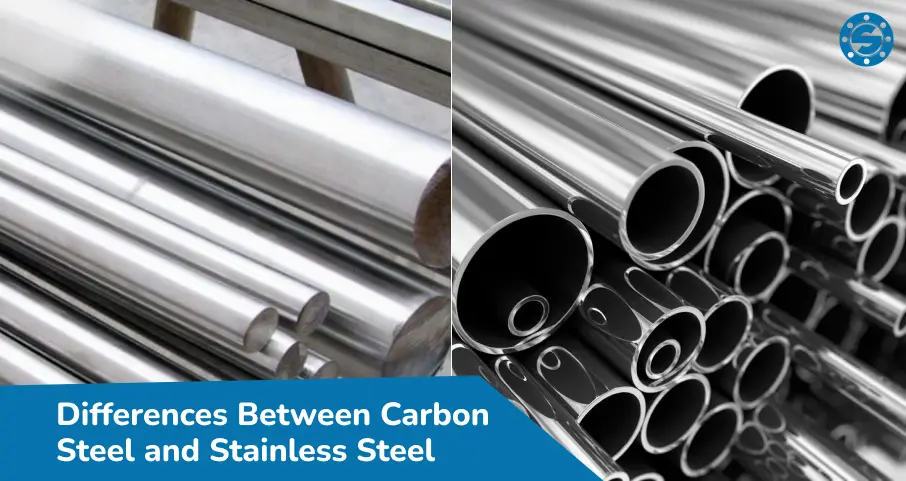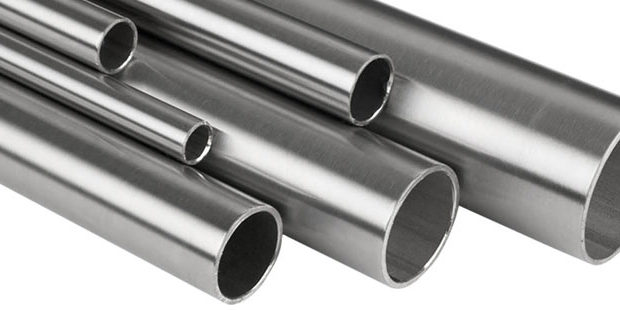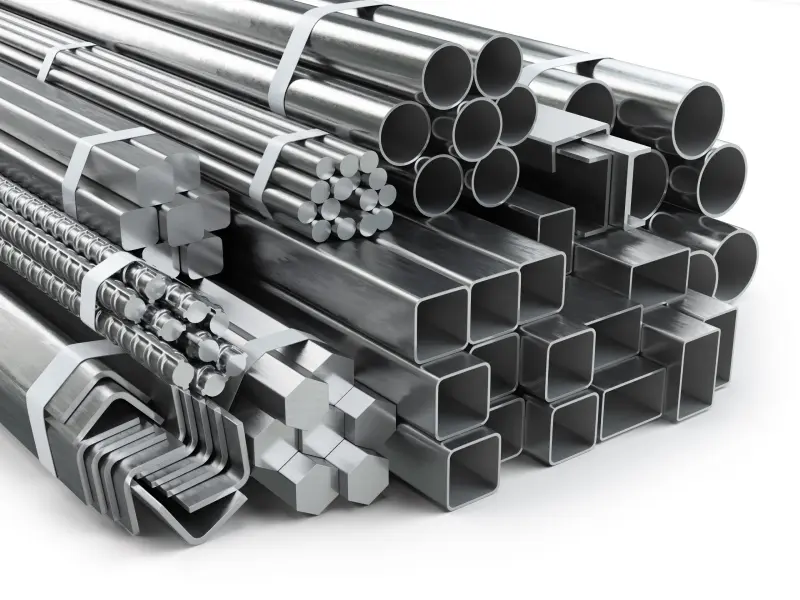Carbon Steel vs Stainless Steel

Steel is a broad term for various alloy materials, including carbon steel and stainless steel. Both types are made from iron and carbon but differ in their specific alloy content, giving each its unique properties.
The key difference between carbon steel and stainless steel lies in their alloy compositions. This difference affects their characteristics and uses. The table below outlines some of the main physical differences between carbon steel and stainless steel.
| Physical Features | Stainless Steel | Carbon Steel |
| Melting Point | The melting point of stainless steel varies between 1375 to 1530 Deg C, which is less than carbon steel. | Typically, Low Carbon Steel has a melting point of 1410 Deg C. The melting point of high Carbon steel ranges between 1425-1540 Deg C, which is greater than stainless steel. |
| Average Density | The average Density of Stainless Steel is 8000 Kg/m3, which is slightly heavier than Carbon Steel. | The average Density of Carbon Steel is 7850 Kg/m3, which is less than stainless steel. |
| Co-Efficient of Linear Thermal Expansion | Depending on grade, the coefficient varies in the range of (10-17.3) X10-6 m/ (m °C). The expansion coefficient of Stainless Steel is comparatively more than that of Carbon Steel. | The thermal expansion coefficient for carbon steel varies in the range of (10.8 – 12.5) X 10-6 m/ (m °C). This is generally less than stainless steel. |

Carbon Steel
Carbon steel is a basic type of steel with up to 2.1% carbon added to it. This increased carbon content makes the steel harder but less flexible compared to other types. The presence of additional alloying elements like manganese or chromium has a minimal impact on its overall properties.
- Construction (roads, railways,
- buildings, and infrastructure)
- Playground equipment
- Automobile parts
- Structural beams
- Knives
- Steel wires
- Appliances

Stainless Steel
Stainless steel is known for its shiny, reflective appearance, which makes it visually appealing. This is achieved by using less than 1.2% carbon and more than 10.5% chromium in its composition. The high chromium content creates a protective oxide layer that guards against rust and stains. Unlike carbon steel, stainless steel’s unique coating helps it resist corrosion and, in some cases, even withstands acids like sulfuric or phosphoric acid.
Stainless Steel Applications
Stainless steel is chosen for tasks that need strong materials and excellent resistance to corrosion. Unlike carbon steel, it doesn’t rust or stain when exposed to water. This makes it ideal for many uses, including:
- Medical instruments
- Handrails
- Hot water tanks
- Surgical implants
- Architectural structures
- Appliance finishes
- Food production and storage
Is Stainless Steel Heavier Than Regular Steel?
Yes, stainless steel is generally heavier and has a lower strength-to-weight ratio compared to carbon steel and aluminum. This makes it less suitable for applications like aviation or aerospace, where minimizing weight is crucial. Carbon steel, being lighter, is a better choice for applications that don’t require the high corrosion resistance that stainless steel offers.
Stainless Steel vs. Carbon Steel: Which Should You Choose?
The choice between stainless steel and carbon steel depends on your project needs and priorities. If you need excellent corrosion resistance and an attractive finish, stainless steel is the better option. However, if you value increased hardness and a lighter weight over aesthetics and corrosion resistance, carbon steel might be more suitable.
Contact Solitaire Steel for Premium Steel Products
For high-quality carbon and stainless steel products, contact us at Solitaire Steel. We offer detailed pricing and information on our premium materials. Reach out today to get the best steel solutions for your needs.
Conclusion: Carbon Steel vs. Stainless Steel
Choosing between carbon steel and stainless steel depends on your project’s specific needs. Carbon steel is ideal for applications where strength and durability are essential but corrosion resistance is less critical. It is often used in construction, machinery, and automotive parts. On the other hand, stainless steel excels in environments where corrosion resistance and a polished appearance are important, making it suitable for medical instruments, kitchen appliances, and architectural features. Understanding the differences helps ensure you select the right material for your application.
FAQs
Stainless steel generally surpasses low-carbon steel in strength, hardness, and corrosion resistance. High-carbon steel provides comparable or superior strength but is less commonly used. For corrosion resistance and durability, stainless steel is often the better choice.
The key difference between stainless steel (SS) and carbon steel (CS) is corrosion resistance. Stainless steel contains high chromium, providing a protective layer against corrosion and rust. Carbon steel, high in carbon, is prone to corrosion and rust when exposed to moisture.
Carbon steel is generally stronger than mild steel, being up to 20% stronger. This makes it ideal for high-strength applications and high hardness requirements, though it can be more expensive compared to mild steel.


